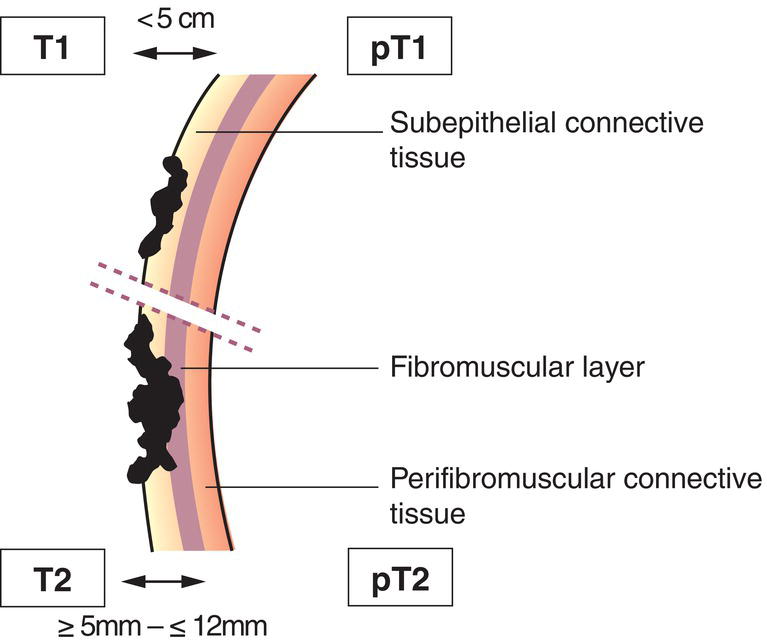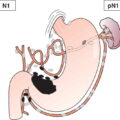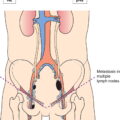The classification applies to carcinomas of the extrahepatic bile ducts distal to the insertion of the cystic duct. Cystic duct carcinoma is included under gallbladder. The regional lymph nodes are along the common bile duct, hepatic artery, back towards the coeliac trunk, posterior and anterior pancreaticoduodenal nodes, and nodes along the superior mesenteric artery. The pT and pN categories correspond to the T and N categories. Note pM0 and pMX are not valid categories.
EXTRAHEPATIC BILE DUCTS – DISTAL (ICD‐O‐3 C24.0)
Rules for Classification
Regional Lymph Nodes
TNM Clinical Classification
T – Primary Tumour
TX
Primary tumour cannot be assessed
T0
No evidence of primary tumour
Tis
Carcinoma in situ
T1
Tumour invades bile duct wall to a depth of less than 5 mm (Fig. 226)
T2
Tumour invades bile duct wall to a depth of 5 mm up to 12 mm (Fig. 226)
T3
Tumour invades bile duct wall to a depth of more than 12 mm (Fig. 227)
T4
Tumour involves the coeliac axis or the superior mesenteric artery (Fig. 228) 


N – Regional Lymph Nodes
NX
Regional lymph nodes cannot be assessed
N1
Metastases to 1 to 3 regional nodes
N2
Metastases to 4 or more regional nodes
M – Distant Metastasis
M0
No distant metastasis
M1
Distant metastasis
TNM Pathological Classification
pM1
Distant metastasis microscopically confirmed
pN0
Histological examination of a regional lymphadenectomy specimen will ordinarily include 12 or more lymph nodes. If the regional lymph nodes are negative, but the number ordinarily examined is not met, classify as pN0.
Summary
Stay updated, free articles. Join our Telegram channel

Full access? Get Clinical Tree








